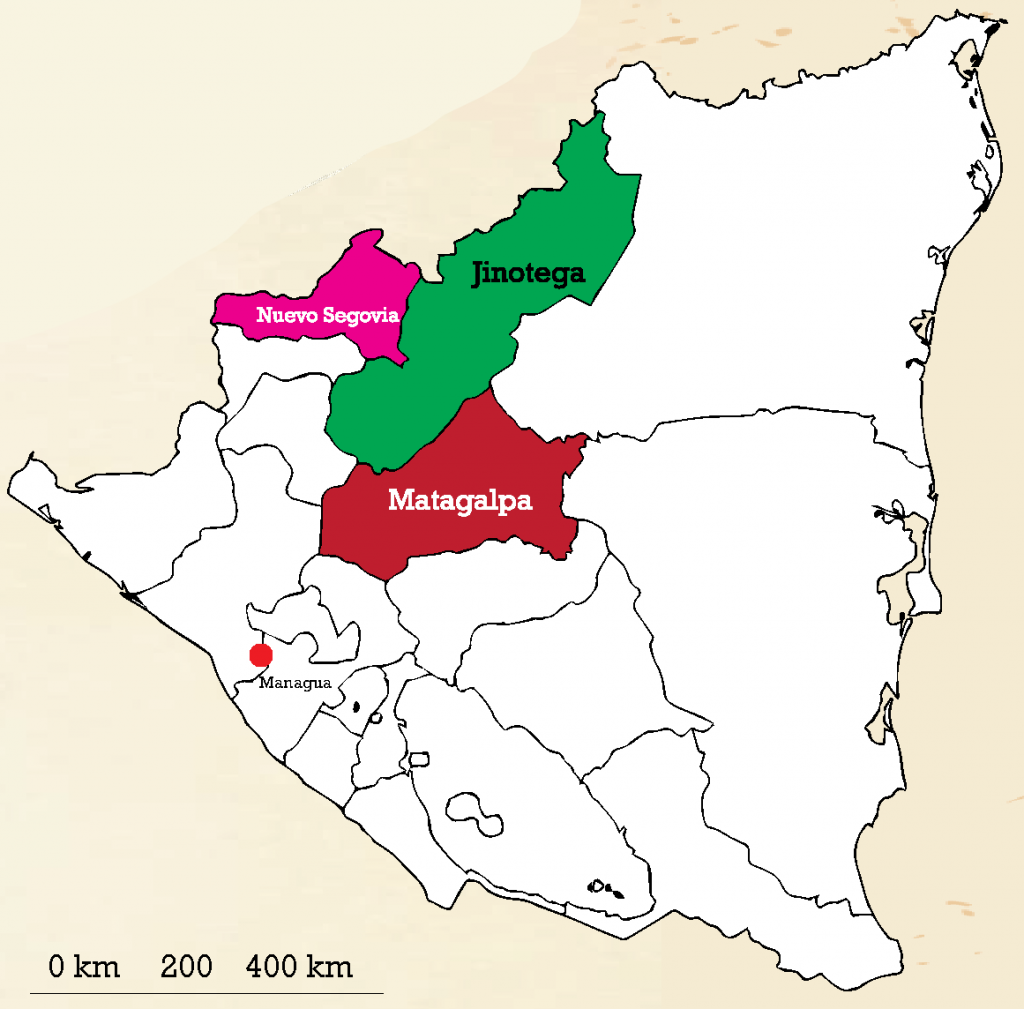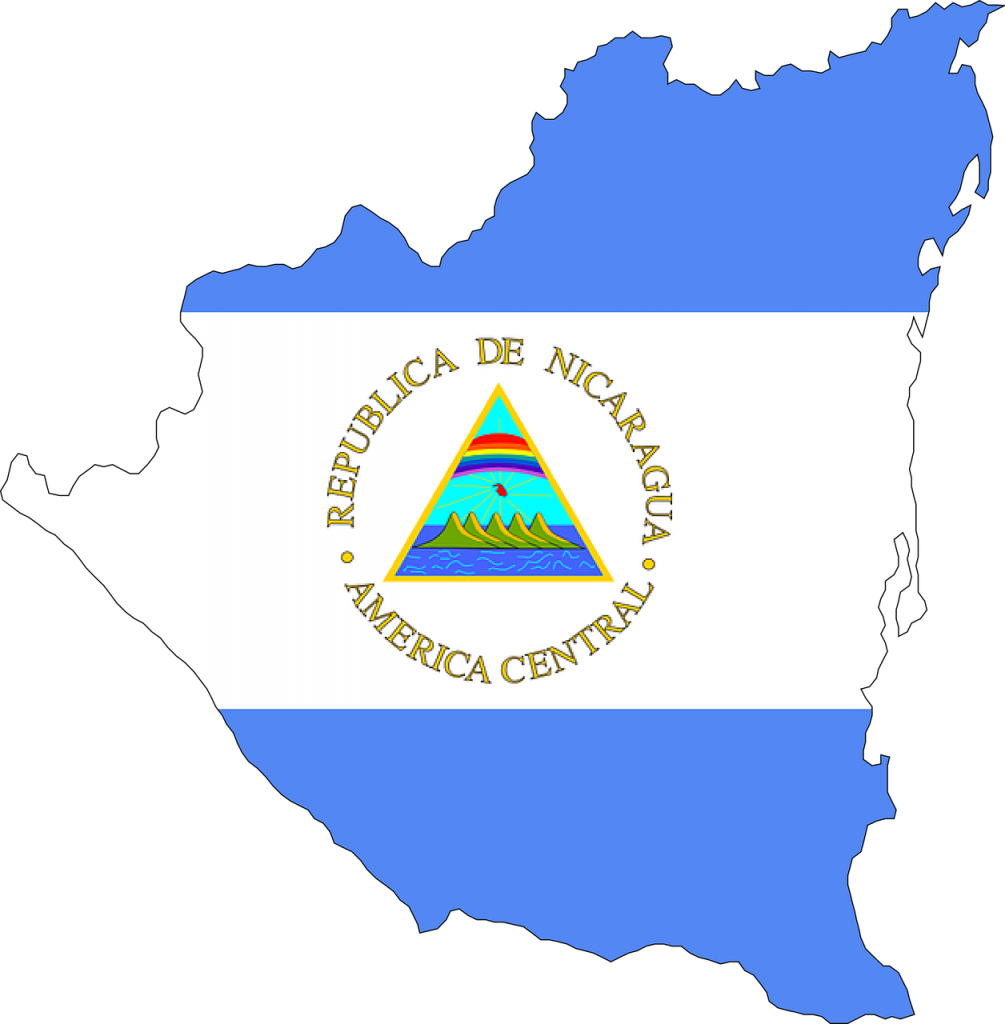Nicaraguan Maragogype
About Nicaragua and its Coffee Production
Nicaragua, the country of Central America. It is the largest of the Central American republics. Nicaragua can be characterized by its agricultural economy, its history of autocratic government, and its imbalance of regional development—almost all settlement and economic activity are concentrated in the western half of the country. The country’s name is derived from Nicarao, chief of the indigenous tribe that lived around present-day Lake Nicaragua during the late 15th and early 16th centuries. Nicaragua has a unique history in that it was the only country in Latin America to be colonized by both the Spanish and the British. Nicaragua’s population is made up mostly of mestizos (people of mixed European and Indian ancestry). The national capital is Managua, which also is the country’s largest city and home to about one-sixth of the population.
Lake Nicaragua, Spanish Lago de Nicaragua, the largest of several freshwater lakes in southwestern Nicaragua and the dominant physical feature of the country. It is also the largest lake in Central America. Its indigenous name is Cocibolca, and the Spanish called it Mar Dulce—both terms meaning “sweet sea.” Its present name is said to have been derived from that of Nicarao, an Indian chief whose people lived on the lake’s shores.
Coffee production in Nicaragua has been an important part of its history and economy. It is one of the country’s principal products. The areas most suitable for the cultivation of coffee have been Managua Department, Diriamba, San Marcos, Jinotepe, as well as the vicinity of Granada Department, Lake Nicaragua, Chontales Department, and in Nueva Segovia; historically, the best coffee is produced in Matagalpa and in Jinotega. Most of the coffee was grown in Managua Department, but Matagalpa Department produced the best bean quality. The most convenient altitude to grow coffee is 800 meters above the sea level
Since coffee came to Nicaragua in the mid-1800s, it has played a significant role in Nicaragua’s economy and environment. Coffee has been an engine for Nicaragua’s national economic development process. It is among the nation’s primary sources of foreign exchange and provides the economic backbone for thousands of rural communities. More than 40,000 coffee farm families cultivate this golden bean often in a way that preserves Nicaragua’s precious forests and threatened biodiversity. In the late 1990s, coffee annually contributed US$140 million to the national economy and provided the equivalent of 280,000 permanent agricultural jobs.
Where does the Nicaraguan Maragogype come from?
Nicaraguan Maragogype comes from the region around Matagalpa in central Nicaragua.
The capital city of Matagalpa gives this region its name, which consists of many estates and cooperatives. Coffees here are typically the Caturra and Bourbon variety.
Nicaragua has three primary geographic regions: the Pacific plains, central northern mountains and the Atlantic coastal lowlands. Rains are relatively infrequent in Nicaragua’s drier Pacific northwest region and almost continuous in the coastal lowlands. For most of the rest of the country, the rainy season begins in May and ends sometime in December. Coffee cherries are generally harvested from October through February.
Nicaragua’s first coffee cherries were planted on the Pacific’s plain mesa, however, most production comes from three regions within Nicaragua’s Central northern mountains. These regions include the Segovias (Estelí, Madriz and Nueva Segovia) known for their floral aromas, distinctive flavour and bright acidity. The Matagalpa and Jinotega regions are also favourable for coffee cultivation, especially in the Isabelia and Dariense mountain ranges. These areas possess rich volcanic soils, a humid tropical forest climate, and lush vegetation, including a great variety of lichens, moss, ferns, and orchids. The outer regions of Matagalpa County border the BOSAWAS Natural Reserve, the largest land preservation initiative in Central America. Matagalpa is generally mountainous, with altitudes ranging from 600 to 1500 metres.


What is Maragoype?
Maragogype is a mutant variety from the Bourbon coffee plant, which was first found in Brazil. This plant has huge leaves, large cherries and huge long shaped beans with a double-cut centre. . It is also known as the “Elephant Bean” in Africa, and ELB’s (extra large beans) in most of the rest of the world due to its large size.
The bean size does not impact the cup quality, but the argument for Maragogype is that the tree produces fewer cherries and flavour is more concentrated. The yield from the true Maragogype is very low, about 5-10 bags per hectare. Due to this, farmers are subsidising their crop with higher-yielding varieties of coffee trees.
The large size of the Maragogype also requires a separate processing line. Many of the farms and mills that handle Marogogypes are old and have high maintenance costs. Hence over the years, the Marogogype processing lines have been removed and this, along with the low crop yield, has assisted in the decreased production.
However, the Maragogype does seem to be making a comeback and the regions of Matagalpa and Jinotega are making progress, as is the region of Nueva Segovia.
Tasting Notes for Nicaraguan Maragogype
| Country | Nicaragua |
| Screen Size / Grade | Maragogype, ELB (Extra Large Beans), Elephant Bean |
| Bean Appearance (green) | Strong green colour |
| Acidity | Medium |
| Body | Medium |
| Bag Size | 69kg |
| Harvest Period | November – March |
| Description | Extra bold bean size offers smooth, full body and medium acidity. |
| Tasting Notes | Sweet flavours of toffee praline and honey with a delicate floral finish. |
| Strength | |
| Processing Method | Washed |
| Altitude | 800 – 1,500 MASL |
History of Coffee in Nicaraguan
Large-scale coffee growing began in Nicaragua in the 1850s, and by 1870 coffee was the principal export crop, a position it held for the next century. Coffee is a demanding crop, however, because coffee trees require several years to produce a harvest, and the entire production process requires a greater commitment of capital, labour, and land than do many other crops. Coffee also grows only in the rich volcanic soil found on mountainous terrain, making transportation of the crop to the market difficult.
The crop of 1891 amounted to more than 5,000,000 kilograms (11 million pounds); 31,000 hectares (76,000 acres) of land were used, corresponding to a yield of 1,235 kilograms per hectare (1,102 lb/acre). The principal means of transporting coffee for exportation were the National Railroad from Granada to Corinto, on the Pacific, and the steamships from Lake Nicaragua and the San Juan River to the Atlantic Ocean. The Government of Nicaragua encouraged the establishment of coffee plantations and decreed to award a prize of 5 cents for each tree in plantations of more than 5,000 trees. The majority of the Nicaraguan coffee was exported to Europe, because the freight to the United States was more expensive, and because in Europe it sold at a higher price. The United States consul stated that the coffee crop of Nicaragua amounted in 1900 to 150,000 bags, versus 75,000 in the preceding year; the coffee export duties amounted to approximately $300,000. The exportation of coffee in 1900 through the ports of El Castillo, Bluefields, and San Juan del Norte was 1,464,351 kilograms, the value of which amounted to $295,348.
In 1992 more land was planted in coffee than in any other crop. The actual amount of land devoted to coffee varies somewhat from year to year but averaged 2,100 km2 (520,000 acres) in the 1980s. Production is centred in the northern part of the central highlands north and east of Estelí, and also in the hilly volcanic region around Jinotepe. Although production of coffee dropped somewhat in the late 1980s, the 1989 crop was still 42,000 tonnes (46,000 short tons). Nicaragua’s poor transportation system and ecological concerns over the amount of land devoted to growing crops on volcanic slopes in the Pacific region limit further expansion of coffee cultivation. These limitations have led growers to explore planting other crops in undeveloped areas of the country.
Interested in some Nicaraguan?
Visit our Nicaraguan page or Espresso Bar to buy a bag of our Nicaraguan Maragogype.
